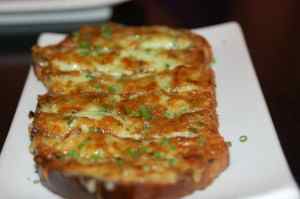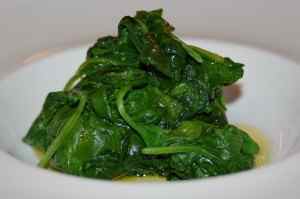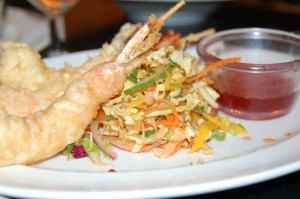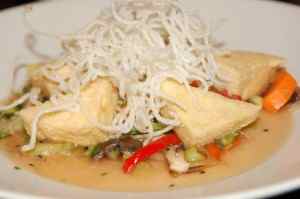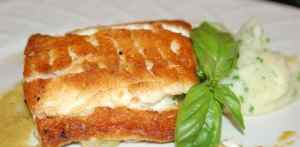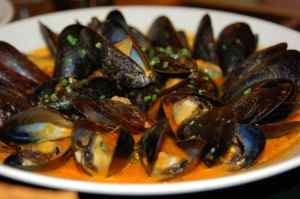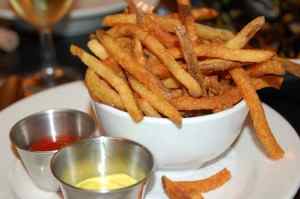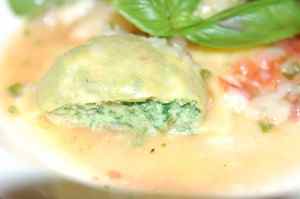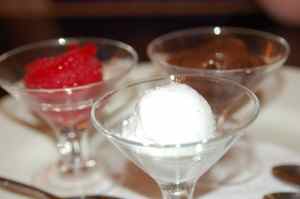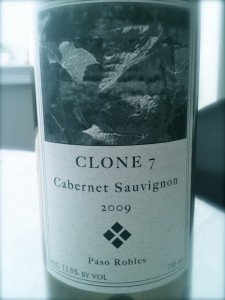 If you drink red wine, you have probably at least heard the word “tannins” in connection with either the taste or the physical sensation produced when you drink the wine. But what exactly are tannins? Tannins are phenolic compounds present in the skin, seeds and stems of grapes, and in the oak used for barrels. The longer the juice of red grapes is kept in contact with these solid parts, the more tannic the wine can become. Tannins are detectable in two ways: 1) a bitter taste; and 2) astringency – a cotton mouth feeling that occurs when tannins react with protein in the drinker’s saliva. They are also responsible for intense pigment in wine. Tannins bond with proteins in wine and precipitate out as the wine ages, causing the wine to become less harsh and less intense in color. Although oak cooperage can also contribute to tannins, it is not a significant amount. Tannin levels vary from grape to grape. The four most tannic grapes in the world are cabernet sauvignon, nebbiolo, syrah, and tannat. Pinot noir, by comparison, has half the tannin content of cabernet sauvignon. Personally, I just adore loose tannins. Cheers!
If you drink red wine, you have probably at least heard the word “tannins” in connection with either the taste or the physical sensation produced when you drink the wine. But what exactly are tannins? Tannins are phenolic compounds present in the skin, seeds and stems of grapes, and in the oak used for barrels. The longer the juice of red grapes is kept in contact with these solid parts, the more tannic the wine can become. Tannins are detectable in two ways: 1) a bitter taste; and 2) astringency – a cotton mouth feeling that occurs when tannins react with protein in the drinker’s saliva. They are also responsible for intense pigment in wine. Tannins bond with proteins in wine and precipitate out as the wine ages, causing the wine to become less harsh and less intense in color. Although oak cooperage can also contribute to tannins, it is not a significant amount. Tannin levels vary from grape to grape. The four most tannic grapes in the world are cabernet sauvignon, nebbiolo, syrah, and tannat. Pinot noir, by comparison, has half the tannin content of cabernet sauvignon. Personally, I just adore loose tannins. Cheers!
Loose Tannins
Wowed by the West Street Grill
I recently spent a lovely weekend with friends enjoying Connecticut wine and food in Litchfield County, the culmination of which was a multi-course lunch at West Street Grill. Following are our impressions of the food and wine.
By Analiese Paik and Elizabeth Keyser
Wine Review by Renée B. Allen
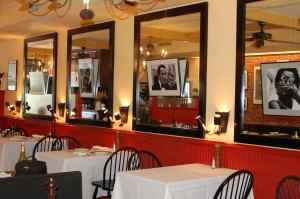
New restaurants get all the buzz, but on day two of the Litchfield road trip it was easy to pass up the darling of the moment for the real thing: a long-established restaurant that puts care into the entire experience of its guests.
Yes, we’re talking about the West Street Grill in Litchfield. For over 20 years restaurateurs James O’Shea and Charles Kafferman have been serving excellent New American food with a French/Mediterranean influence. A day or weekend trip to Litchfield is not complete without a meal at this iconic restaurant, which is known for being a haunt of many well-known actors and writers. O’Shea was once asked why so many celebrities eat there. “We leave them alone,” he replied. Actually, he takes very good care of his guests and is known for telling a funny story — or two or three.
The black and white photos in the front dining room are from a 1950’s photo collection that are rotated regularly. The old-world feel immediately gives you the impression that they take food and hospitality very seriously.
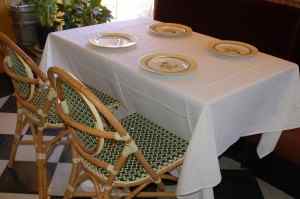 In the back dining room where renovations are well underway, the Mediterranean style plates decorated with fruited lemon and olive sprigs appeared as the tables were turned for dinner service. The original rattan French bistro chairs are caned in a dark green and ivory open weave, true to the original style, and a perfect match for the restaurant’s awning colors.
In the back dining room where renovations are well underway, the Mediterranean style plates decorated with fruited lemon and olive sprigs appeared as the tables were turned for dinner service. The original rattan French bistro chairs are caned in a dark green and ivory open weave, true to the original style, and a perfect match for the restaurant’s awning colors.
The French bistro-inspired atmosphere is inviting, the service is on a professional level rarely seen, but West Street Grill is really about the food. It was one of the earliest proponents of farm-to-table (“before the term was coined,” says O’Shea), and at a recent lunch, the fresh ingredients were the stars in the room. Executive Chef Jimmy Cosgriff is the star in the kitchen.
The West Street Grill picks up fresh tomatoes, basil, blueberries, peaches, lettuces and arugula from local farms. Dean’s Farm Stand in Fall’s Village provides beets, basil, potatoes and some tomatoes. Waldingfield Farm in Washington, a certified organic vegetable farm that grows a variety of heirloom tomatoes, is another source. Milk from local farms is used to make the house ricotta. O’Shea grows some of his own tomatoes, organically of course, as well as rhubarb, lettuces, and large amounts of herbs like lovage, chives, Russian and pineapple sage, lemon balm, tarragon, horseradish, opal shiso and purple basil. “We are heavy chive and basil users,” he said. He buys all his vegetable seedlings from USDA organic grower Gilbertie’s Herb Gardens. Honey, maple syrup and some other products come from the farmers’ market. West Street Grill also uses Baldor, which sources from local farms from a 300 mile radius.
Lunch was superb.
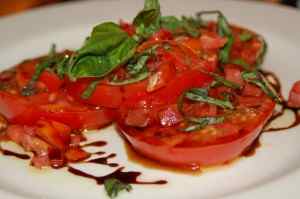 W.S.G. Locally Grown Tomato Salad with native basil, fleur de sel and 12 year aged balsamic vinegar
W.S.G. Locally Grown Tomato Salad with native basil, fleur de sel and 12 year aged balsamic vinegar
These perfectly ripe tomatoes were a natural starter for a hot day. They were rich in fresh, tomato flavor.
Parmesan Aioli Peasant Bread
Intensely flavorful with a satisfying crunch from the gratin and toasted house-made bread, this has been a house classic since 1990.
Sauteed Spinach
Baby spinach, picked up that morning from a local farm, was wilted and served simply to let the natural flavors shine. It melted like butter in the mouth.
Soup de Poisson, aioli and garden chives
Rich with roasted fish and vegetables, the soup was hearty and was flavored with fennel. It was topped with an understated aioli; a more forceful aioli would have overwhelmed the soup.
Shrimp Tempura
Gulf shrimp were skewered straight and perfectly cooked so they were meltingly tender on the inside, crisp and slightly golden on the outside. They were served with a refreshing salad of Napa cabbage, mango, cilantro, peanuts, Bermuda onion, carrot and pickled ginger along with sweet chili dipping sauce.
Pan Seared Silken Tofu
Triangles of fresh tofu lightly seared and served with wok-seared vegetables seasoned with scallion, cilantro, pickled ginger. The dish was topped with crispy rice noodles with sweet chili sauce.
Fresh, Wild, Day-Boat, Connecticut Fluke with potato puree, braised leeks, lemon caper coulis
The pan-seared fluke (summer flounder) was golden and crisp, yet so tender it was hard to believe it wasn’t breaded. “Nothing comes between a fish and my chef’s pan,” O’Shea told us. Hidden beneath the fish were ribbons of leek. The herbed potato puree was light and delicate, and was accented by the lemon caper coulis. This dishes hit the mark on both flavor and execution.
Moules Frites
The mussels were steamed in a gorgeous broth of garlic, lemon, white wine and tomato. The broth was clean, delicate and well-balanced. The fries were crunchy and delicious, especially when dipped into the saffon-scented aioli.
“Jimmy’s Ravioli” — Homemade Spinach and Gorgonzola Ravioli with garlic, grape tomatoes, basil, grana padano
Two plump pillows of light-as-air ravioli offered the perfect filling-to-dough ratio so the focus was on the filling, rather than the pasta that enrobed it. The filling’s silky smooth texture came from house-made ricotta from local milk, blended with spinach, gorgonzola and Parmesan cheese. A brothy, delicate sauce of fresh tomatoes, garlic, basil and grana padano created a very refined ravioli.
Dessert
A trio of coconut, raspberry and chocolate sorbets was refreshing and bursting with flavor – pieces of coconut, ripe raspberries, dark chocolate with no bitterness. None were overly sweet, which we appreciated.
Wine Review by Renée B. Allen
Casa Julia Sauvignon Blanc, Chile 2010
Our decadent dining experience began with a Chilean Sauvignon Blanc from Casa Julia, a vineyard with a solid, hands-on approach to sustainable agriculture. Chilean Sauvignon Blanc has progressed by leaps and bounds in the past 10 years. Winemakers have been exploring cooler regions in Chile for growing these grapes with phenomenal results. This example from Casa Julia exhibited many of the traits found in these successful plantings. To begin, slightly muted notes of tropical fruits danced on the nose, hinting at the riches to be found within. These tropical notes revealed themselves on the tongue richly, but without the aggression often associated with warmer climate Sauvignon Blancs. The midpalate opened to a wave of citrus which was followed by a crisply acidic and well structured finish. This wine is tailor-made for drinking with seafood and proved a worthy pairing for the Soup de Poisson.
The Vineyard at Strawberry Ridge Ascot Reserve Chardonnay, Western Connecticut Highlands 2008
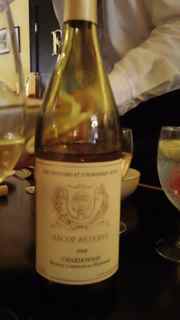 For our second wine, James O’Shea insisted on what he claimed to be the best wine in Connecticut, the Ascot Reserve Chardonnay from The Vineyard at Strawberry Ridge in Connecticut. The vineyard owners, Robert and Susan Summer, have hired Connecticut vintner Jonathan Edwards to produce this wine. Probably the best traveled wine in Connecticut, from New York to Las Vegas all the way to Macau, the list of venues carrying this limited production wine reads like a celebrity “it” list. The vineyard’s most recent accolade is their production of the wines for the famed Rao’s restaurant in New York. The wine opened with aromas of vanilla, apple and caramel, delicately punctuated with hints of nutmeg. The first fleeting taste to tantalize the tongue was green apple, which quickly yielded to butterscotch on the midpalate from the use of French oak barrels during fermentation. The finish ended with notes of fig and citrus, and tongue-smacking astringency. Although this wine bore little resemblance to the flinty, mineralic, stainless steel fermented Chardonnays most commonly associated with Connecticut, it was an admirable example of the influence the vintner wields over the Chardonnay grape. This wine was a nice complement to the Pan Seared Connecticut Fluke, which might just have been the best fish dish ever to grace this wine taster’s lips.
For our second wine, James O’Shea insisted on what he claimed to be the best wine in Connecticut, the Ascot Reserve Chardonnay from The Vineyard at Strawberry Ridge in Connecticut. The vineyard owners, Robert and Susan Summer, have hired Connecticut vintner Jonathan Edwards to produce this wine. Probably the best traveled wine in Connecticut, from New York to Las Vegas all the way to Macau, the list of venues carrying this limited production wine reads like a celebrity “it” list. The vineyard’s most recent accolade is their production of the wines for the famed Rao’s restaurant in New York. The wine opened with aromas of vanilla, apple and caramel, delicately punctuated with hints of nutmeg. The first fleeting taste to tantalize the tongue was green apple, which quickly yielded to butterscotch on the midpalate from the use of French oak barrels during fermentation. The finish ended with notes of fig and citrus, and tongue-smacking astringency. Although this wine bore little resemblance to the flinty, mineralic, stainless steel fermented Chardonnays most commonly associated with Connecticut, it was an admirable example of the influence the vintner wields over the Chardonnay grape. This wine was a nice complement to the Pan Seared Connecticut Fluke, which might just have been the best fish dish ever to grace this wine taster’s lips.
Geyser Peak Cabernet Sauvignon, Alexander Valley 2007
The powerful, classic Geyser Peak Cabernet Sauvignon proved an excellent companion to the Homemade Spinach & Gorgonzola Ravioli. Everything a cab should be, this wine’s bouquet foretold the fruit and spice that awaited the taster. In a beautiful balance of fruit forwardness and medium tannins, black cherry and chocolate, accentuated by pepper, coated the palate, before succumbing to the lingering finish.
West Street Grill
48 West Street, Litchfield, 06759
www.weststreetgrill.com
Reprinted with permission from www.fairfieldgreenfoodguide.com
When New and Old Worlds Collide
 I had the pleasure of attending my first wine tasting event at Divine Wine Emporium in Niantic last Wednesday. The Emporium is a liquor store with a “learning center” in the back for wine events. The store is well laid out, warm, friendly and interesting. Little touches catch one’s eye, like the collection of antique wine bottle openers at one end of the store. The owner, Ken Turcotte, is knowledgeable and passionate. After perusing the shelves, I headed for the back room. The event was packed, every seat was filled and bodies lined the walls. Things were getting warm and the wine had yet to be poured. The main event? Marcus Notaro, head winemaker at Col Solare vineyard in Washington State. Mr. Notaro looks too young to be a head winemaker but, after listening to him speak, I’m convinced he’s up to the task.
I had the pleasure of attending my first wine tasting event at Divine Wine Emporium in Niantic last Wednesday. The Emporium is a liquor store with a “learning center” in the back for wine events. The store is well laid out, warm, friendly and interesting. Little touches catch one’s eye, like the collection of antique wine bottle openers at one end of the store. The owner, Ken Turcotte, is knowledgeable and passionate. After perusing the shelves, I headed for the back room. The event was packed, every seat was filled and bodies lined the walls. Things were getting warm and the wine had yet to be poured. The main event? Marcus Notaro, head winemaker at Col Solare vineyard in Washington State. Mr. Notaro looks too young to be a head winemaker but, after listening to him speak, I’m convinced he’s up to the task.
Mr. Notaro spoke of the unique topography in Washington and how it affects viticulture. According to Mr. Notaro, Argentina is the only other region in the world that is topographically similar to Washington. It is this unique topography, he continued, that brought Piero Antinori to Washington in 1992, known for his lifelong curiosity about how grapes are grown around the world. Upon seeing the Washington wine region, led by the oldest and highly acclaimed winery, Chateau Ste. Michelle, Antinori formed a partnership with CSM for the purpose of producing fine, cabernet sauvignon based wine. Their search for the right terroir brought them to Red Mountain, the warmest of the Washington AVAs. The nutrient-sparse soil, warm days with cool nights, and low rainfall was ideal for producing wines that met Antinori’s requirements: 1) ageability; 2) good intensity of flavor; and 3) authenticity. And so, a vineyard marrying old and new world styles and philosophies was born. Col Solare is the child of that marriage. It is Italian for “shining hill.”
Mr. Notaro was informative, eloquent and engaging. But how did the wines fare?
1. Chateau Ste. Michelle 2009 Pinot Gris – straw color with apple and pear on the nose. The flavor smacked of green apples. Acidic, thirst-quenching, not too much complexity, with a slightly tart finish.
2. Villa Antinori 2009 Villa Bianco Toscana IGT – made from trebbiano and malvasia, pinot bianco and pinot griogio, the color was pale straw yellow. I found the nose to be intensely herbaceous and floral which carried through to the taste. There was a slight woodiness to it.
3. Chateau Ste. Michelle 2007 Syrah – light garnet with fair clarity, the nose jumped with smoked meats, spice and dark fruits. This cured meat aroma was present in the flavor, along with spice, followed by dark berries and molasses.
4. Villa Antinori 2007 Villa Antinori Rosso Toscana IGT – sangiovese, cabernet sauvignon, merlot and syrah. Ruby red with good clarity, there was earth and tar on the nose. The flavor opened up with this earthiness, giving way to jaminess with currants and cherries. Nicely complex. One participant described this wine as “musical.”
5. Col Solare 2006 Shining Hill Red Blend – merlot, cabernet sauvignon and a touch of syrah. Dark ruby with a hint of smoke on the nose, the flavor was smokey and peppery with black fruit spice on the finish.
6. Col Solare 2006 Red Wine – predominantly cabernet sauvignon, with merlot, cabernet franc, petit verdot and syrah. Garnet hued, aromas of cigar box and dark berries rose from the glass. This full-bodied wine was well-balanced with black cherries, pencil shavings and chocolate notes leading up to a long silky finish.

Notes:
After noticing a heavy smoked or cured meat aroma and flavor in the Col Solare wines, I wanted to know more about the cooperage. Mr. Notaro explained that they use a combination of new and old oak, as well as a combination of American and French oak, and that all of the barrels are charred. I could attribute the toasty aromatics to the charring, almost like a bbq flavor or, the way Mr. Notaro described it, like a marshmallow that’s been toasted over an open fire just a little too long.
Special thanks to Ken Turcotte, owner of the Divine Wine Emporium, for putting together an enjoyable and informative tasting. I look forward to spending more time in the learning center.
